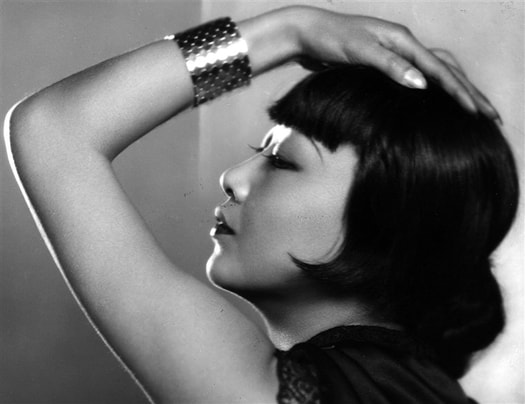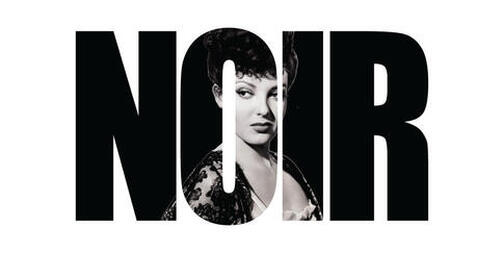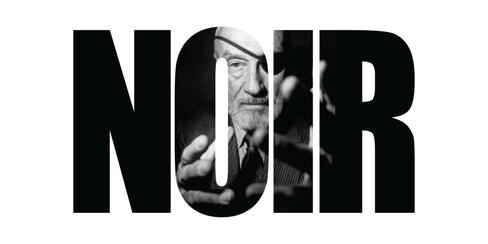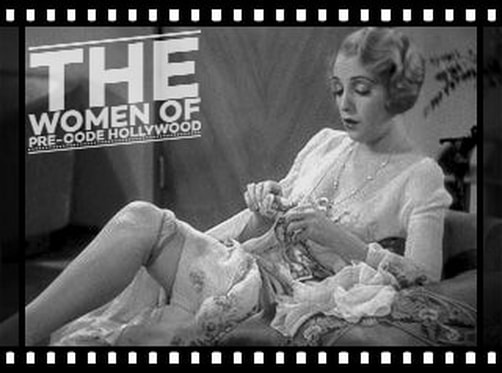TRIVIA:
Was known for taking everyday items and making them part of her clothing or accessories. | Her Chinese name, Wong Liu Tsong in Cantonese, means "Willow Frosted, Yellow" (according to the Western custom) or "Yellow, Willow Frosted" (according to the Chinese custom). | She was more often cast in "sinister oriental" roles only after actresses like Nita Naldi were forced out of motion pictures owing to the coming of sound. | Anna once had an affair with noted silent film director Marshall Neilan. Most of her romances tended towards Caucasian men, as many Chinese men looked down on actresses as prostitutes. | In 1960, actor Anthony Quinn co-starred with Anna in her last film Portrait in Black (1960). Quinn also starred as an Inuit in Nicholas Ray's The Savage Innocents (1960). Co-starring with him was actress Marie Yang, who in this film was for some reason billed as Anna May Wong. This may be the only instance ever of an actor appearing with two actresses of the same name in the same year. | Producer Ross Hunter cast her in the film version of Flower Drum Song (1961). However, she became sick in December 1960 and was replaced by Juanita Hall. | Once coached Dorothy Lamour, who was appearing as a Eurasian girl in the film Disputed Passage (1939). | In the 1930s, she toured in vaudeville and with her own one-woman show, traveling through Italy, Spain, Switzerland, and the Scandinavian countries. In London, she had a widely praised nightclub engagement at the Embassy Club, where she sang and danced. | Spoke French and German fluently along with her native English and Chinese. | She starred in the first full length color movie The Toll of the Sea (1922). | Desperately wanted the role of O-Lan in the romance film The Good Earth (1937). However, due to her being ethnically Chinese and the male lead Paul Muni being Caucasian, she was turned down for the role. She was given an opportunity to play Lotus, a Chinese peasant girl, which she turned down. | Has a star on the Hollywood Walk of Fame on 1708 Vine Street in Hollywood, California on February 8, 1960. Also there is a lifesize statue of her part of the Four Ladies Hollywood Gazebo which also features other actresses of color including Dorothy Dandridge. It is located at the Western Part of the Hollywood Walk of Fame. | Made her debut on the London stage with Laurence Olivier in a play called "The Circle of Chalk". English critics and audiences complained that her American accent was too strong for her to be understood. | During production of the crime film Tip-Off Girls (1938), Paramount Pictures offered Anna May Wong the opportunity to rent her two Pekinese dogs Maskee and Dumshaw to appear in the movie. Miss Wong declined the offer. | Lucy Liu dedicated her Hollywood Walk of Fame speech to her. Their stars are adjacent to each other. | She donated her salary from both films Bombs over Burma (1942) and Lady from Chungking (1942) to the then United China Relief. | Her role as a sexually available Chinese woman…would eventually earn her resentful criticism in China
AVAILABLE FILMS:
ACROSS TO SINGAPORE (1928)
BOMBS OVER BURMA (1942)
DANGEROUS TO KNOW (1938)
DAUGHTER OF SHANGHAI (1937)
DAUGHTER OF THE DRAGON (1931)
ELSTREE CALLING (1930)
IMPACT (1949)
ISLAND OF LOST MEN (1939)
JAVA HEAD (1935)
KING OF CHINATOWN (1939)
PORTRAIT IN BLACK (1960)
SHANGHAI EXPRESS (1932)
STUDY IN SCARLET, A (1933)
TALE OF TWO WORLDS, A (1921)
WHEN WERE YOU BORN? (1938)
BOMBS OVER BURMA (1942)
DANGEROUS TO KNOW (1938)
DAUGHTER OF SHANGHAI (1937)
DAUGHTER OF THE DRAGON (1931)
ELSTREE CALLING (1930)
IMPACT (1949)
ISLAND OF LOST MEN (1939)
JAVA HEAD (1935)
KING OF CHINATOWN (1939)
PORTRAIT IN BLACK (1960)
SHANGHAI EXPRESS (1932)
STUDY IN SCARLET, A (1933)
TALE OF TWO WORLDS, A (1921)
WHEN WERE YOU BORN? (1938)
VIDEO TRIBUTE:
Anna May Wong

Active - 1920 - 1960 | Born - Jan 3, 1905 in Los Angeles, CA | Died - Feb 3, 1961 in Santa Monica, Los Angeles, CA | Genres - Drama, Crime, Mystery | Height: 5’ 6”
Anna May Wong was born Wong Liu Tsong on January 3, 1905, in Los Angeles, California. Her parents ran a laundry in the city's Chinatown section. Anna became a photographer's model when she was still attending Hollywood High School.
She was fascinated with the movie industry at a young age, having observed several films being shot in and around her neighborhood. At almost 14 years old, her actor cousin, James Wong Howe, showed a photograph of her to a director, which resulted in her getting a bit part in Dinty (1920) (unfortunately for film buffs, there are no prints of the movie in existence, because of deterioration). The next year she appeared in two more films, Shame (1921) and Bits of Life (1921) (in which she received billing). Anna's big break came when she landed the role of a Mongolian slave girl in The Thief of Bagdad (1924). This film put her in the position of being the first (and for a long time the only) U.S. Chinese performer to become a bona fide movie star. It led to bigger parts in other movies with a Chinese or other East Asian theme, in which she alternated between playing the heroine or the heroine's evil nemesis.
Another hit for her was A Trip to Chinatown (1926), in which her trademark bangs and East Asian dress only accentuated her beauty, enhancing her status with the movie-going public. Before long her name was synonymous with 'exotic', East Asian-themed productions, and films such as The Devil Dancer (1927), Across to Singapore (1928) and The Crimson City (1928) kept fans coming to the theatres. Anna's talent and beauty carried her through a successful transition into talkies, and she also traveled to Europe to act in films there. Upon her return to the U.S. after three years, she was signed to a contract with Paramount. Her career reached its zenith with her casting in Shanghai Express (1932) with Marlene Dietrich.
Another in her string of successes was Dangerous to Know (1938) with Charles Laughton, Lloyd Nolan and Anthony Quinn, in which she played Lin Yang, a "kept" woman who seeks revenge when her gangster lover tries to replace her. By the 1940s, however, Anna's career had begun to stall. Theatre patrons were finding escapist fare elsewhere, and her Chinese melodramas were no longer in demand. Also, attitudes towards race in the U.S. made it almost impossible for Anna to get good parts in pictures other than East Asian-themed ones.
After Lady from Chungking (1942), Anna didn't appear on-screen again until Impact (1949), and then only in a minor supporting role. She had an early television series, The Gallery of Madame Liu-Tsong (1951), but it didn't last long. Anna appeared sporadically on television throughout the 1950s. Her career problems were exacerbated by a drinking problem, and by the mid-1950s she learned that she was suffering from heart problems and cirrhosis of the liver.
She made a final effort to recharge her career with Portrait in Black (1960). Although the first was a modest hit, the second film was released to mixed reviews and meager box office receipts. On February 2, 1961, Anna died of a heart attack in Santa Monica, California. She had never married.
- IMDb Mini Biography By: Denny Jackson
Anna May Wong was born Wong Liu Tsong on January 3, 1905, in Los Angeles, California. Her parents ran a laundry in the city's Chinatown section. Anna became a photographer's model when she was still attending Hollywood High School.
She was fascinated with the movie industry at a young age, having observed several films being shot in and around her neighborhood. At almost 14 years old, her actor cousin, James Wong Howe, showed a photograph of her to a director, which resulted in her getting a bit part in Dinty (1920) (unfortunately for film buffs, there are no prints of the movie in existence, because of deterioration). The next year she appeared in two more films, Shame (1921) and Bits of Life (1921) (in which she received billing). Anna's big break came when she landed the role of a Mongolian slave girl in The Thief of Bagdad (1924). This film put her in the position of being the first (and for a long time the only) U.S. Chinese performer to become a bona fide movie star. It led to bigger parts in other movies with a Chinese or other East Asian theme, in which she alternated between playing the heroine or the heroine's evil nemesis.
Another hit for her was A Trip to Chinatown (1926), in which her trademark bangs and East Asian dress only accentuated her beauty, enhancing her status with the movie-going public. Before long her name was synonymous with 'exotic', East Asian-themed productions, and films such as The Devil Dancer (1927), Across to Singapore (1928) and The Crimson City (1928) kept fans coming to the theatres. Anna's talent and beauty carried her through a successful transition into talkies, and she also traveled to Europe to act in films there. Upon her return to the U.S. after three years, she was signed to a contract with Paramount. Her career reached its zenith with her casting in Shanghai Express (1932) with Marlene Dietrich.
Another in her string of successes was Dangerous to Know (1938) with Charles Laughton, Lloyd Nolan and Anthony Quinn, in which she played Lin Yang, a "kept" woman who seeks revenge when her gangster lover tries to replace her. By the 1940s, however, Anna's career had begun to stall. Theatre patrons were finding escapist fare elsewhere, and her Chinese melodramas were no longer in demand. Also, attitudes towards race in the U.S. made it almost impossible for Anna to get good parts in pictures other than East Asian-themed ones.
After Lady from Chungking (1942), Anna didn't appear on-screen again until Impact (1949), and then only in a minor supporting role. She had an early television series, The Gallery of Madame Liu-Tsong (1951), but it didn't last long. Anna appeared sporadically on television throughout the 1950s. Her career problems were exacerbated by a drinking problem, and by the mid-1950s she learned that she was suffering from heart problems and cirrhosis of the liver.
She made a final effort to recharge her career with Portrait in Black (1960). Although the first was a modest hit, the second film was released to mixed reviews and meager box office receipts. On February 2, 1961, Anna died of a heart attack in Santa Monica, California. She had never married.
- IMDb Mini Biography By: Denny Jackson
"I see no reason why Chinese and English people should not kiss on the screen, even though I prefer not to."
In Photoplay (June 1923): " I couldn't find a taxi, and I haven't got a car myself. I ruined the last one I had trying to beat a motor cop to a bridge. I beat him all right, but I missed the bridge."
"I was so tired of the parts I had to play. Why is it that the screen Chinese is nearly always the villain of the piece, and so cruel a villain--murderous, treacherous, a snake in the grass. We are not like that. How should we be, with a civilization that’s so many times older than that of the West. We have our own virtues. We have our rigid code of behavior, of honor. Why do they never show these on the screen? Why should we always scheme, rob, kill?"
“When I die, my epitaph should be: I died a thousand deaths. That was the story of my film career. Most of the time I played in mystery and intrigue stories. They didn’t know what to do with me at the end, so they killed me off.”
— Anna May Wong




